(pustulata?) (Abraham, 1877)
This species has been observed on Reunion and Mayotte Islands
This species has small, closely spaced tubercles with often ringed with white execpt those in the center of the dorsum, making the central region appear darker. The mantle is pale brown to fawn or beige. There are tiny black/dark brown spots present on the mantle The stout brown rhinophores usually have flame-like cream markings on their clubs The branchia are two-toned : the outer side cream flecked with brown and white, the inner side orange-brown |

|
|
| Showing species characteristics... | Photo Christophe Cadet |
|
See more about : Sightening and mating periods
See more about : Carminodoris bifurcata (pustulata?) variability in Southwest Indian ocean
Remarks :
Identification confirmed by Terry Gosliner and Nathalie Yonow. Some people considered that the valid name is Carminodoris/Hoplodoris pustulata other that is Carminodoris/Hoplodoris bifurcata...
Synonymous : (according Worms)
- Hoplodoris bifurcata, (Baba 1993)
Bibliographic data :
The body is oval, flat and the notum is covered with tubercles. The tubercles are mostly rounded on the dorsal median, becoming progressively more tapered around the median. The tubercles closest to the mantle edge are much smaller than the others.
There is a central dorsum, red-brown band of color, with all tubercles having the same coloration. On the tubercles towards the mantle edge, there is a white ring at the base followed by a red-brown or tan ring, and a white tip on some tubercles.
The rhinophore and gill sheaths are moderately tall and have tuberculate, irregular edges.
The long, tapered rhinophores have a long lamellar portion (approximately 20 lamellae)
The underside is finely flecked with brown. The ventral side of some preserved specimens has retained only a few randomly sprinkled dark spots
Similar species
There are several species in Carminodoris, unfortunately, apart from a couple of obviously different species, such as C. armata and C. estrelyado, the others are very difficult if impossible to accurately identify externally. They do have quite significant differences anatomically in their reproductive systems and radular morphology. It's just unfortunate they don't seem to be reflected by external differences.
Looks like Carminodoris grandiflora but in C. grandiflora :
- The tubercules are larger with sometimes dusty white markings on the top.
- The rhinophores are lighter tan than the body and the tips are white.
- The gills have a frosted appearance on the tips.
References :
Bill Rudman Seaslug site : Sea Slug Forum : Hoplodoris bifurcata
Nudipixel : Hoplodoris bifurcata
Publications :
Baba, K. (1993): Two new species of Carminodoris (Nudibranchia: Dorididae) from Japan. Venus, The Japanese Journal of Malacology, 52(3) : 223-234. (Figs 1-10, Pl.1.)
Fahey, S. J. & Gosliner, T. M. (2003) Mistaken identities: On the Discodorididae genera Hoplodoris Bergh, 1880 and Carminodoris Bergh, 1889 (Opisthobranchia, Nudibranchia). Proceedings of the California Academy of Sciences, 54(10) : 169-208.
Other photos of Carminodoris bifurcata (pustulata?) :
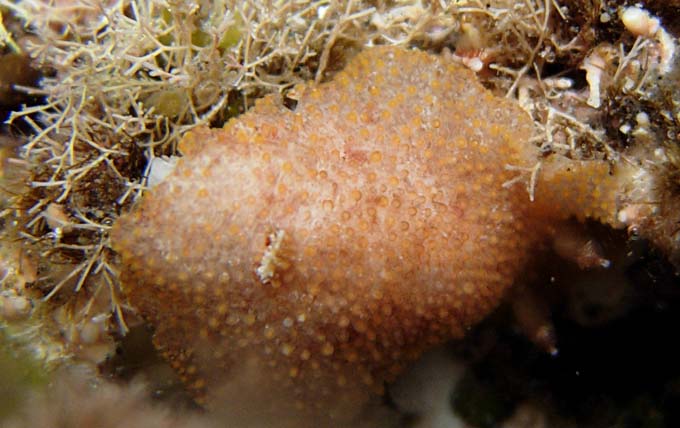 |
Christophe Cadet Réunion, Etang salé, on the rocky coast, less 1 m, 6 October 2010, size : 10-15 mm The underside is finely flecked with brown.
|
Frederic Ducarme Mayotte, Mtsanga fanou, May 2018
|
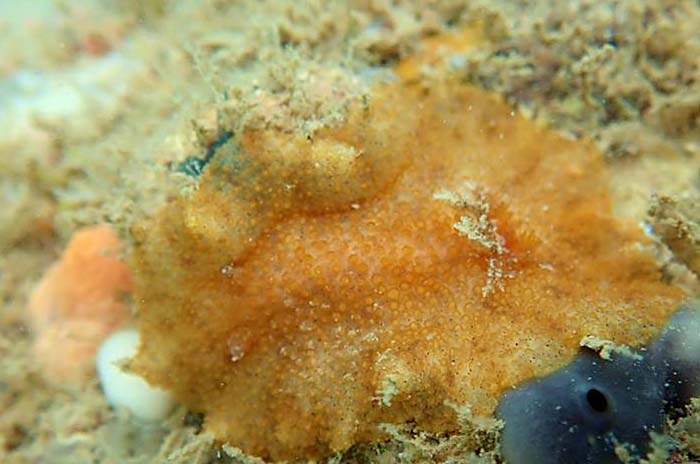 |
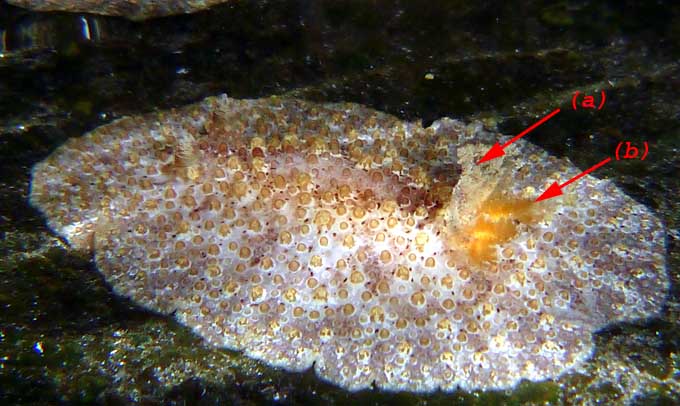 |
Sébastien Vasquez Reunion, Etang salé, 3 March 2015 During the night The branchia are two-toned : the outer side cream flecked with brown and white (a), the inner side orange-brown (b)
|
Christophe Cadet Réunion, Etang salé, on the rocky coast, less 1 m, 2 September 2010, size : 40 mm The underside is finely flecked with brown.
|
.jpg) |
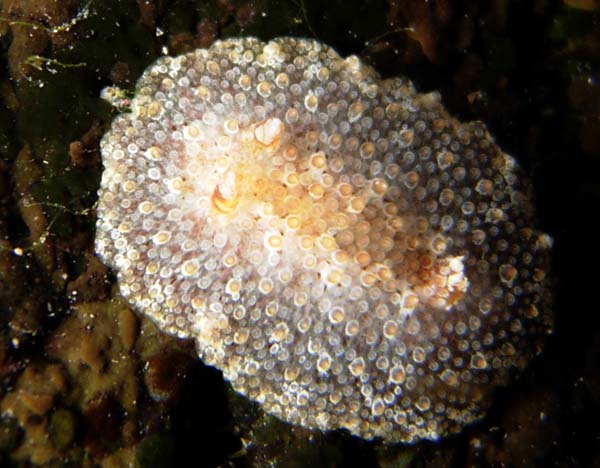 |
Christophe Cadet Réunion, Etang salé, on the rocky coast, less 1 m, 6 October 2010, size : 10-15 mm 4 spécimens observed during this night A juvénile specimen.
|
Jean-Marie Gradot Réunion, Etang salé, on the rocky coast, less 1 m, August 2015
|
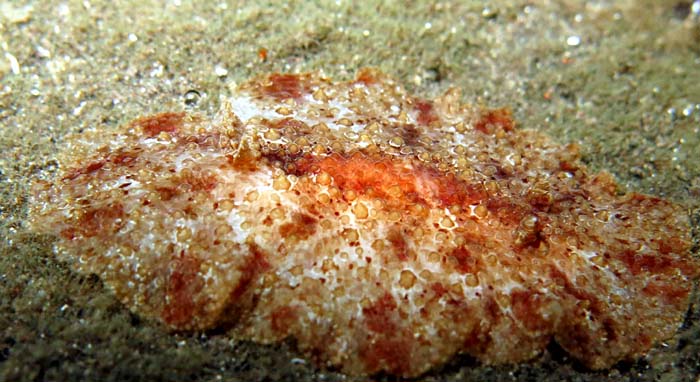 |
.jpg) |
Sébastien Vasquez Réunion, Cap la Houssaye, less 1 m, 27 November 2014 During the night |
More photos from Indian Ocean
If you have taken a photo of this species in South West Indian Ocean, please Contact us...
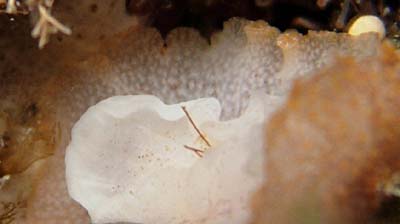
.jpg)